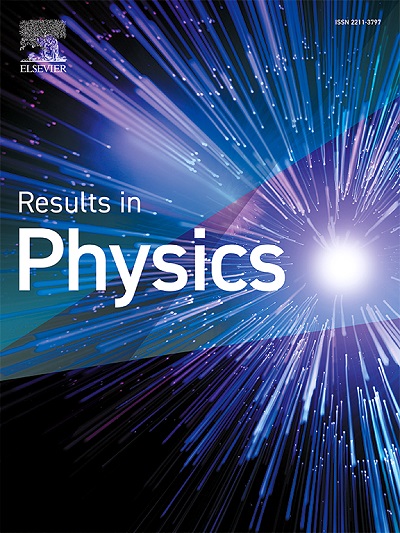Innovative mathematical correlations for estimating mono-nanofluids' density: Insights from white-box machine learning
IF 4.4
2区 物理与天体物理
Q2 MATERIALS SCIENCE, MULTIDISCIPLINARY
引用次数: 0
Abstract
The current research offers credible mathematical models solely for estimating mono-nanofluids' density (ρnf), which can be useful for thermal engineering calculations required by various industries and applications. Accordingly, a comprehensive data bank encompassing 4004 experimental data-points was utilized to execute two rigorous machine-learning techniques: Group Method of Data Handling (GMDH) and Gene Expression Programming (GEP). Subsequently, two high-accuracy correlations were fine-tuned based on the four independent variables: average nanoparticle diameter (dnp), nanoparticle mass concentration (ϕm), nanoparticle density (ρnp), and base-fluid density (ρbf). Two variables pressure (P) and temperature (T), with rather minor impacts on the density of the mono-nanofluids under investigation, were excluded in the final correlations as a result of the modeling process and the intelligent operation of the machine-learning techniques. By performing multiple statistical and graphical analyses, comparative evaluations highlighted the superior performance and outstanding accuracy of the GEP-based correlation (with AAPRE=0.6614% and R2=0.9671). Moreover, sensitivity analysis and parametric trend assessments revealed that ϕm and ρbf were the most crucial variables affecting ρnf values, with relevancy factors of approximately 0.72 and 0.71, respectively. By considering the GEP-based correlation's outputs and applying the leverage statistical approach, a considerable portion (96.33%) of the total data-points was identified as valid data.

估计单纳米流体密度的创新数学相关性:来自白盒机器学习的见解
目前的研究为估计单纳米流体的密度(ρnf)提供了可靠的数学模型,可用于各种工业和应用所需的热工计算。因此,利用包含4004个实验数据点的综合数据库来执行两种严格的机器学习技术:数据处理组方法(GMDH)和基因表达编程(GEP)。随后,基于四个自变量:平均纳米颗粒直径(dnp)、纳米颗粒质量浓度(ϕm)、纳米颗粒密度(ρnp)和基液密度(ρbf),对两个高精度相关性进行微调。由于建模过程和机器学习技术的智能操作,对所研究的单纳米流体密度影响较小的两个变量压力(P)和温度(T)被排除在最终的相关性中。通过多项统计和图形分析,对比评价显示基于gep的相关性具有较好的性能和较好的准确性(AAPRE=0.6614%, R2=0.9671)。灵敏度分析和参数化趋势评估结果表明,影响ρnf值的最关键变量为ϕm和ρbf,相关因子分别约为0.72和0.71。通过考虑基于gep的相关输出,并应用杠杆统计方法,确定了相当一部分(96.33%)的数据点为有效数据。
本文章由计算机程序翻译,如有差异,请以英文原文为准。
求助全文
约1分钟内获得全文
求助全文
来源期刊

Results in Physics
MATERIALS SCIENCE, MULTIDISCIPLINARYPHYSIC-PHYSICS, MULTIDISCIPLINARY
CiteScore
8.70
自引率
9.40%
发文量
754
审稿时长
50 days
期刊介绍:
Results in Physics is an open access journal offering authors the opportunity to publish in all fundamental and interdisciplinary areas of physics, materials science, and applied physics. Papers of a theoretical, computational, and experimental nature are all welcome. Results in Physics accepts papers that are scientifically sound, technically correct and provide valuable new knowledge to the physics community. Topics such as three-dimensional flow and magnetohydrodynamics are not within the scope of Results in Physics.
Results in Physics welcomes three types of papers:
1. Full research papers
2. Microarticles: very short papers, no longer than two pages. They may consist of a single, but well-described piece of information, such as:
- Data and/or a plot plus a description
- Description of a new method or instrumentation
- Negative results
- Concept or design study
3. Letters to the Editor: Letters discussing a recent article published in Results in Physics are welcome. These are objective, constructive, or educational critiques of papers published in Results in Physics. Accepted letters will be sent to the author of the original paper for a response. Each letter and response is published together. Letters should be received within 8 weeks of the article''s publication. They should not exceed 750 words of text and 10 references.
 求助内容:
求助内容: 应助结果提醒方式:
应助结果提醒方式:


